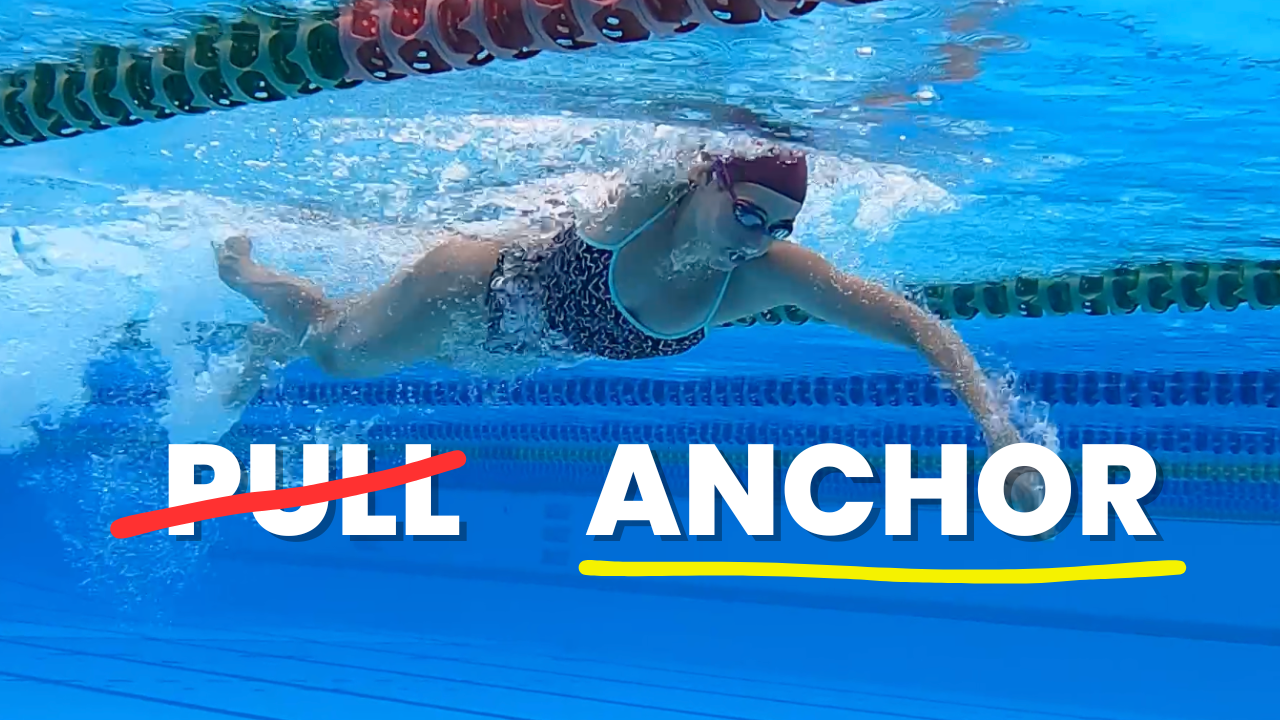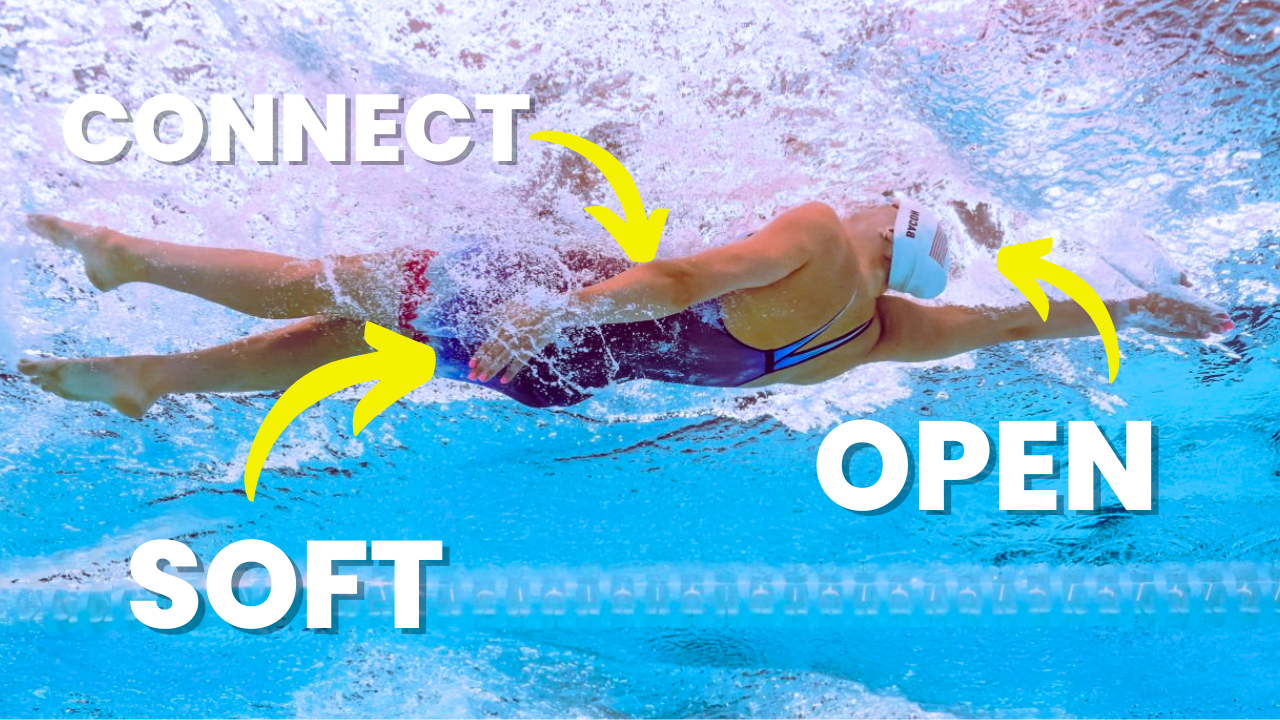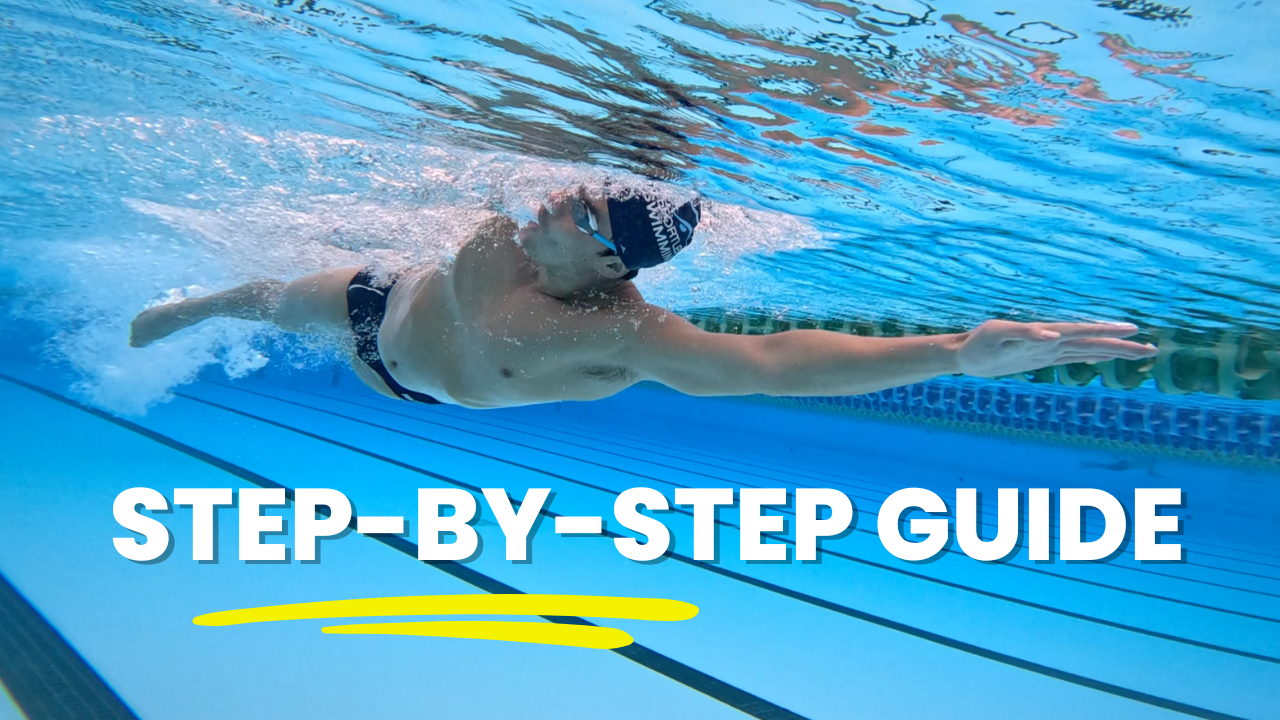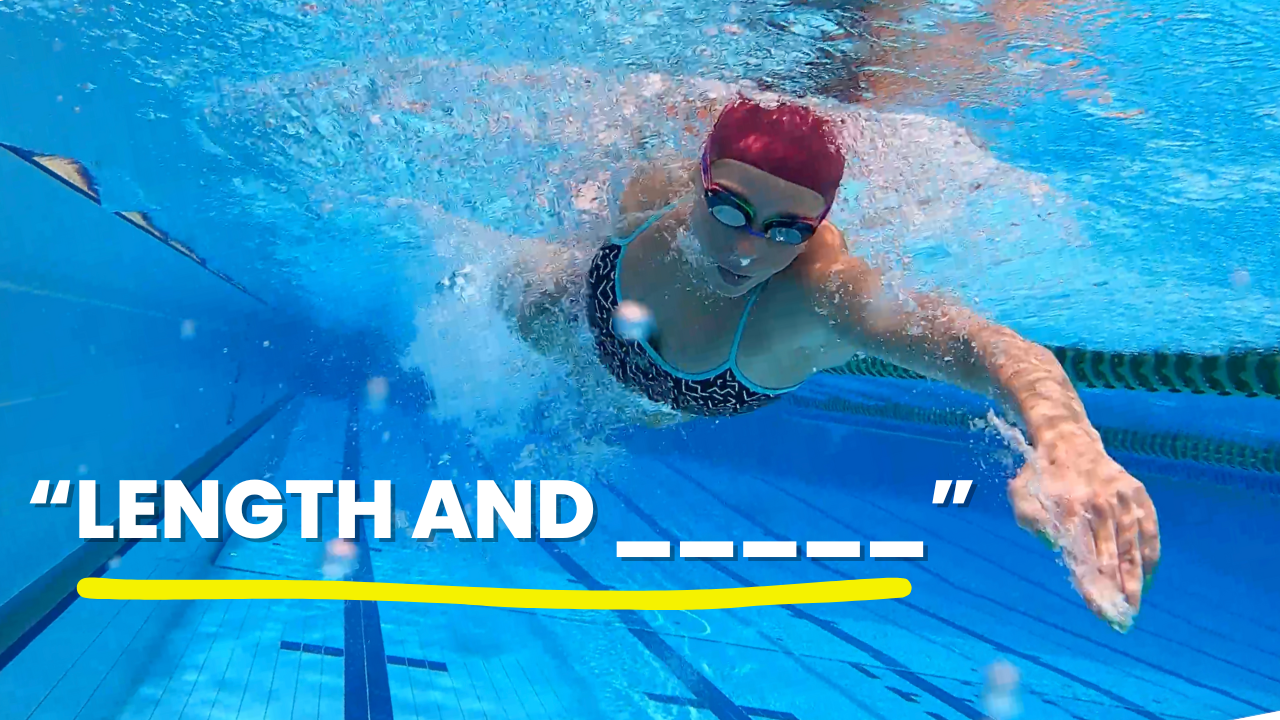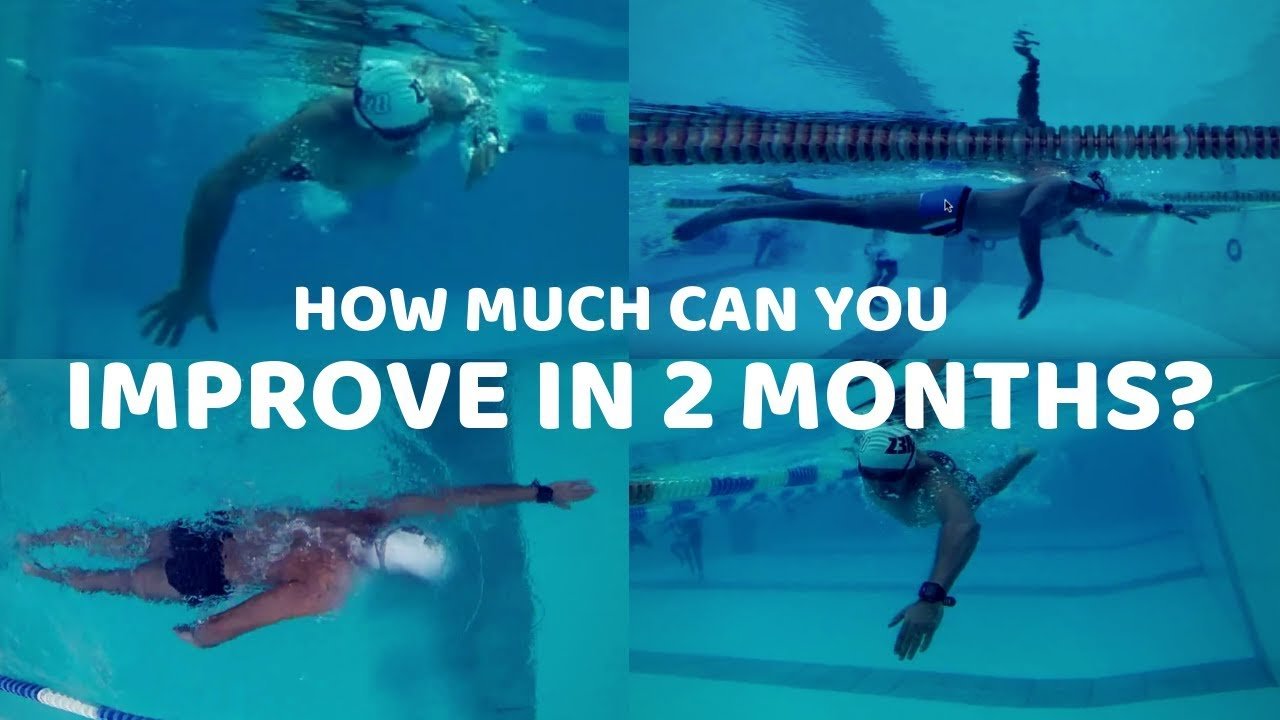Transcription:
Hi. Brenton here from Effortless Swimming. This is another episode of Feedback Friday. I’ve got a special edition here where I have a guest who you may have heard of before. His name is Taren Gesell. He has the Triathlon Taren YouTube channel, so you’ve probably seen some of his videos before. Go and check it out if you haven’t already.
So today’s episode, I do a full analysis for Taren, so he’s kindly sent me his videos to do a full analysis, see what is worth working on for the next three, six and 12 months. He assumes around a 130 pace for a half Ironman swim. So, already swimming really, really well. What we’re looking at is more the finer points of the stroke, the fundamentals are really strong. So I hope you get a lot out of this analysis, and you can learn something about your own stroke in it.
If you’d like to get the drills that I recommend to Taren, based on the analysis, then there’s a link below this YouTube video in the description. Put your email address in, I’ll send you those drills, and hopefully, you can use those to start improving your own stroke.
So let’s get into it. This is Triathlon Taren, or Taren Gesell’s video analysis for his freestyle stroke, and hope you enjoy it.
Hey Taren. So, the first angle I look at is normally from the side view under the water. Now here, I will typically look at body position to start with, and I like to see the three touch points of the top of the head, the hips and the heels, or the surface. You can see here, for the most part, really good lines through the body. So you’ve got your head, got the hips, heels, up near the surface there.
So, good line through the body, you’re horizontal. We’re not creating any extra drag with the legs and the hips dropping down there. So, in terms of body position, sitting up pretty well there. If you put a wet suit on, you go open water, obviously that will come up even higher, which is great. Looking at head position. Now this is something that’s individual to everyone, but you can see here, within the range that I’d normally like to sort of stick within, anywhere from straight down to 45 degrees in front. You see you’re in that sort of slightly further down range.
I like to see the back of the neck being extended, so long through the neck, top of the head, just out of the water. So it ticks both of those boxes, which is terrific. Looking at the breathing there too, you can see that bottom goggle stays in the water. So you’re getting split vision, which is terrific. So, really good breathing position there with the head. I think that’s excellent.
Then what I’ll typically look at is the kick. Now we haven’t got that many views of the kick there. From what I can see here, it all looks pretty good. You may be able to possibly bend the knees even just a little bit more. I’m just kind of looking at, see this kick here, look at this left leg, how you’ve actually got room, if you want, to bend that knee a little bit more in order to get the heel to break the surface just slightly more.
Let’s have a look what happens on this next kick. Yeah, same thing. I reckon that left leg, left knee, can bend just slightly more, in order to get the heel up. You know, a little bit more. But overall, I think the kick is, you know, you’re working well with it. I like to see this whip down with the foot. So in the down kick, we want to see that coming down with a bit of a whip. That’s where you get that little bit of propulsion, and on both sides. I think you’re getting that pretty well.
You can also see you’ve got good ankle flexibility there. Particularly, if you’re doing triathlons, it’s pretty common to have not great ankle flexibility, but you can see you’re doing a nice downwards kick there, and the foot actually sort of comes back from the line of the leg. So, that’s terrific.
Then looking at the entry on this left side. So, always like to see the fingertips entering first. Left hand, that comes in, fingers first, which is great. Then extending out in front, and getting to this starting catch position really well. So I call this the starting catch position, which is basically fingers below the wrist, wrist below the elbow, and I’m looking for sort of a long line out in front there. So, pretty good starting catch position on this left side.
I just want to have a look at that on the right side. So this right one comes in, goes fingers first as well, extends out in front, and again, nice position here. All right. So, fingers by wrist, wrist, low elbow. What I probably would like to try and get to, let’s say in the next couple of weeks, is that … I’m just looking at this position here.
When I’m normally looking at this side view, I like to see the hips rotated just a little bit more. So this left hip here, probably like to see that lift up a little bit more, and possibly just a bit more rotation through the shoulders, in order to reach out a little bit further. So, I think you’ve got room to kind of just extend reach slightly more by rotating the hips and the shoulders just a bit further. You want to make it feel like you’re reaching for something just slightly out of reach.
The reason I say that, is because, when we look at the top view, I’ll show you that I think we can kind of make a longer, narrower line through the body, if we can do those two things, which is rotate a little bit more and reach out a little bit more. The other thing I’d probably look to do is just keep the arm out in front, kind of spend a bit more time with this arm, kind of sliding or surfing out in front just a little bit longer. So, I’ll play it here for you.
To me, I think the hand probably goes into the catch a little bit too soon. Now, it’s slightly different, if you’re doing triathlon and open water, the stroke rate’s often going to come up a bit higher than what it will in the pool. But that said, you can still spend that little bit of extra time in this reach phase, because what tends to happen there, is you kind of get this last little bit of travel and distance per stroke while the hand here is pressing back.
If this goes too early into the catch, one, it can make it a little bit harder to set up a nice [inaudible 00:05:58] catch, but also, you just missed out on that last sort of bit of distance per stroke. So, I just like to add a little bit more reach and extension, spending that little bit longer in that phase of the stroke.
Now, then looking at the catch. So, the way I sort of define a high elbow catch is, if we were to draw a line from your shoulder to your hand, the elbow will be above. So, on this side of that straight line. So that’s how I define a high elbow catch. Now, obviously, you don’t need to go over something extreme, like a 90 degree catch, takes crazy amounts of mobility and strength to be able to hold that. But, what I will typically like to typically work towards is, over time, incremental improvements in this position here.
So you can see where that right arm is, if we just sort of pause it in that phase of the stroke. So, you know, it’s a slightly dropped position, but I still think you hold very good water. If you’re swimming 130’s for half Ironman, you know, you’re obviously swimming well. So, I think this is still quite a good cash position.
But let’s say in the next three to six, possibly 12 months, if we can get this being a little bit further forwards, or sort of higher than that straight line, that’s going to be a huge improvement in your speed. That’s where I think, for the most part, that 125, eventually 120, can come from, is by improving that position.
So, if you were, let’s say a lot of the pros will typically be somewhere up around here, right? So, what that will change will just be the direction of the forearm, the hand, as it presses back. So, you can see with that green line, that’s primarily going to be pressing back on the water, where you currently are. Still not bad pressing back, but primarily down on the water. So, that’s kind of what we want to incrementally improve.
Now, in terms of how do you go about that? There’s some drills that I’ll give you that will help with that sort of position. It will take time, it will probably feel a bit awkward in the beginning, and it’s not going to happen straight away. But, over the next three, six to 12 months, you can really make some big gains with that, and I think it’s worth focusing on.
Just to show this left side as well. Similar position, just in terms of if we draw that straight line from the shoulder to the hand, [inaudible 00:08:15] it’s just a little bit below it, which is common, most people tend to sit there. But as I said, over the next couple of months, working towards that sort of position. So, like I said, doesn’t need to be really extreme, but even just a small improvement is very noticeable in terms of your time and your speed. So that will be really the key thing. The other thing is just that extra reach and rotation there. So that’s the side view.
Now, just showing you what that looks like from the front. We’ll just bring it back here. Okay, so looking at this from the front, there’s a few things that I normally look for. First of all, here. Okay, so, I just want to show you the angle of the shoulder rotation here. Now looking from the front, what I’ll typically see is, with the fastest [inaudible 00:09:10] in triathlon, or the production swimmers, they’re normally somewhere from about 32 degrees, up to sometimes a maximum of about 45, but normally sitting around this sort of 35 to 40 degrees.
So you can see your shoulder rotation is about 32, which is why I think we can just get slightly more shoulder rotation to help with this extra reach. Then just with the catch. So, starting in a great position, you’re in line with the shoulder here. All right, so hands in line with the shoulder right there. Then, you can see here is the fingertips point down, really good job of that. Fingertips pointing down. This angle here. So, normally I look for it to be 100 to 120 degrees, 125. Not fired all from that ideal angle. So 100 to 120 is where you want to be.
So, in order to kind of make that change, what I will often try and get to is shoulders, upper arm, one straight line. Then the hand, forearm, kind of not quite there. But having that in one straight line, and then the forearm, and the hand is somewhere on the inside of that elbow. So I can say that’s about 104 degrees. The biggest change is really this elbow and hand has just gone out in that direction. That’s the main change.
The reason that we’d like to try and keep that as one line instead of one, two, three. All right, so the shoulders, [inaudible 00:10:38] is one line, is that’s when you can really engage the lats well. It’s like if you try and pull yourself out of the pool with the arms in that position, or the elbow sort of forwards of the shoulders, you don’t have as much strength there. So that’s what I’ll typically see with those really top swimmers there, is that all in line?
So, that’d be the change on the right arm. On the left arm. So here, left arm, if we measure that angle, let’s have a look. It’s probably a little bit straighter than the other one. So, 145. So, if we were to get it out to that 100, 120, again, trying to get the shoulders and the upper arm in one straight line, hand on the inside, somewhere like that.
So basically, yeah, I call this, it’s like a half diamond shape there. So it’s like a half diamond shape. So, a bit more bend in the elbow, maybe not quite as deep with the hand, that would sort of come up and out to the side there. Again, don’t worry too much about how to go about that yet, I’ll give you some drills to the kind of work on that position there. You know, once you can get the arms in that sort of angle, if we look from the front, that’s going to be one contributing factor to getting to that higher elbow position in the pull-through.
So that’s really the key, you know, I really think that’s what’s worth focusing on. Just looking the other angles, I won’t spend too much time on them, because I think you’re doing really well, is over the top here, I like to use the analogy of swimming on train tracks, in terms of the hand should enter roughly in line with your ears or your shoulder when it goes in. Every time it does that, it should reach and extent on those train tracks. You want to try and avoid any sort of cross over here.
You do a really good job of entering left hand in line with that shoulder, out in front. Same as the right side. Right in line with that shoulder extending forwards, again, on those train tracks, which is great. Now just from this view here, if you can see this. So, see how when you’re at full extension on the right side, this right arm isn’t completely straight, there’s a bit of bend in the elbow. To me, sort of here, it looks like you’re a little bit flat through the hips and through the shoulders.
So, if you can just kind of get that extra rotation that I was talking about before, and straighten that arm, reach out a little bit more, it’s going to make you a little bit longer in the water. Plus, it’ll make you narrow in the water. In terms of, if we look at this from here, with that extra rotation, you’d probably fit in between those sort of green lines. Yeah, it doesn’t look like a whole lot of change, but any extra drag that you create in the water is really magnified, just because of the, you know, how thick the water is. So that would just be the change I’d be looking for there.
Timing looks really good, in terms of when you’re pulling through. Then the final shot from here, above. All right, so with your recovery, I think you’re recovering really, really well. This is a great angle. So the elbow is relatively high, fingers are out to the side and the hands are lack. So, 102 degrees through there, typically what I want to try and aim for. Then same on this left side, nice open recovery, great for open water, swimming and triathlon. So, I think this recovery position is terrific. 112 degrees.
So, the one other thing I just want to point out, just briefly, which I didn’t mention before, that may contribute to that extra reach out in front, is the exit of the hand here. So, see this position right here? If we draw a line through the forearm and the hand, and then kind of trace it as we go. All right, so it’s coming up in that direction. There.
So, if we look at that, in terms of where’s the hand or the forearm pressing? See how it’s kind of coming up towards the water? So, if we look at that from a proportional or the direction of the force there, it’s more coming up in that direction. So, I think if we can get a little bit kind of shallower at the back of the stroke. So, instead of coming up in this direction, we can get the palm of the hand, or the hand pressing back past the hip, that will be a, yeah, a big change from two sides of things. One, just kind of finishing off the stroke with a little bit extra. Plus, it will make it a lot easier to then keep this arm out in front a little bit longer too.
All right, and I think it’s probably similar on the left side, although it’s a little bit harder to see. But yeah, I reckon it’s just finishing a bit too deep there. So what you’ll normally see … actually, I’ll pull up another video now just to show you.
So, if we look at this on the right-hand side, it’s Clayton Fettell. So he’s a professional triathlete. Normally one of the first guys out of the water. You can just see this change or the difference here. So, you can just see that his elbow is near the surface there, and fingertips are facing down here, just fingertips are facing back. Then if we kind of move this through, we’ll put that together. Just see the direction that he’s pushing back to the palm of the hand, pressing back there. At the moment, the palm of the hand’s facing up. So we want to try and essentially get the palm of the hand continuing to press back just pass the hip there.
I’ll show in slow motion again. So you can just see that difference. So, that’s how he’s able to get just that little bit extra out of the stroke. Plus, he’s able to … well, he’s got a really sort of long stroke and very efficient there. So that’s another thing that I’d probably look to work on there.
So then the question is, all right, how do we go about making those changes? What I’ll do is send you some drills that are specific to each of those key points, and all I’d recommend doing is, within your warmup every time you swim, is practice a couple of those. We’ll practice those drills for four to six 25’s each within your warmup, working on each of those things. Then just go back to your normal swim session. Because what we’re looking to do is essentially change your habits, change your motor patterns that you’ve built up over time.
The best way to change it is, as often as regularly as you can, be focused on those key points, and often it can help to do drills to break down each of those things in a more sort of isolated or specific movement, and really focus on it and concentrate on it. So, you know, I think in the next sort of three to six months, there’s a really good chance that you could bring that pace down, sort of half Ironman pace, down under that 130 to 125, and then onwards from there. So, yes, it takes time, it takes practice, but swimming really, really well already. I think with these three changes, that can really make a difference in your stroke over the coming months and years. Good job.
I hope you enjoyed this episode of Feedback Friday. If you want to get the drills that I gave to Taren to help work on each of those things, there’s a link below, click on that, put in your email address and I’ll send you those drills. If you’ve got any similar things that you’d like to work on with your stroke, they can be really effective drills.
Now, if you’d like to get video analysis done of your own stroke, then this is something that I do on a daily basis with our members. So the Effortless Swimming membership is where people record their swimming, either with an iPhone, with a GoPro, whatever camera you’ve got, you can send footage into me.
Then on normally a pretty regular basis, every three to six weeks, most members will send in a video of their stroke. I’ll do an analysis, give you some specific drills to help make adjustments and corrections in your stroke, and put together a bit of a plan of attack for you going forwards to help get your swim times down, make swimming hopefully a bit easier, coming out of the water feeling fresher, and obviously, get the speed up as well.
Now swimming’s a learned skill, so it’s something that you can improve. I know when I was growing up, I felt like I’d sort of hit a bit of a plateau, like I was stuck for a while, and I didn’t know what I could do to get faster, because I was training as hard as I possibly could, and I felt like I was hitting my head against a brick wall for awhile. But, really, a lot of it will come down to technique.
So, with your GoPro, with your iPhone, if you can record yourself swimming, I can give you some really detailed ways to go about making those changes. It’s not going to happen straight away, you’re not going to get faster within one day. It will take time, but time is what you’ve got on your side. So that’s often, if you have that approach, the longterm approach, then it’s a lot easier to go about making those improvements. If you’re committed to working on that stuff for at least six months, but ideally 12 months and onwards, you can get faster, you’re not stuck where you are.
So, if you’d like to work on your own strike, check out the Effortless Swimming membership. That’s where I am on a daily basis, working with swimmers from all over the world.
Thanks for watching. I’ll see you next week.


